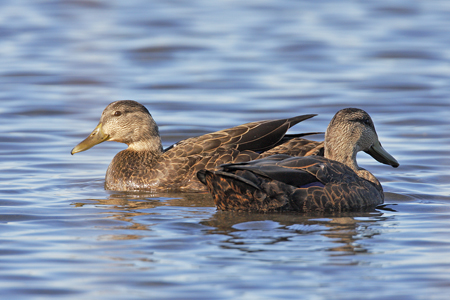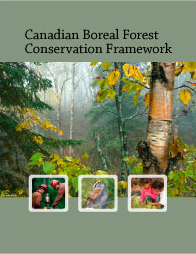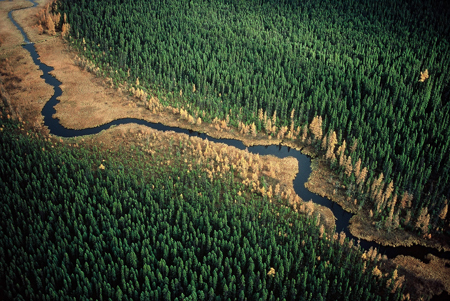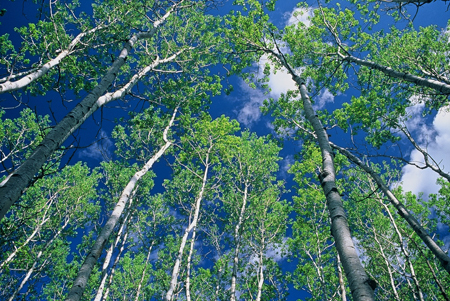Take a quick guess – what is the most protected large forest landscape in the world?
Hint: It’s not the mighty Amazon, and it’s not the humid tropical forests painted across much of Southeast Asia.
If you guessed Canada’s Boreal Forest give yourself a pat on the back.
Last week at the 24th International Congress for Conservation Biology (held by the Society for Conservation Biology), our friend and colleague Steve Kallick of the Pew Environment Group’s International Boreal Conservation Campaign announced that Canada has, albeit quietly, become the global leader on forest conservation.
Canada’s Boreal Forest, which encompasses an astonishing 1.3 billion acres, is one of the most important bird breeding regions in the world. Its lush forests and open expanses of lakes, rivers, and wetlands provide ideal breeding habitat for a variety of migratory birds, including hundreds of species that winter or migrate through the United States. It’s also one of the world’s most efficient natural climate regulators, as it sequesters carbon dioxide out of the atmosphere and stores 208 billion tons of carbon, equivalent to 26 years worth of the world's industrial emissions.

The boreal forest is one of the most important breeding grounds in the world for migratory birds. Most of North America’s American Black Duck population breeds in the boreal forest.
Credit: Jeff Nadler
It’s also highly intact and many regions are free of industrial disturbance. However, over 30% of Canada’s Boreal has been slated for future development through a combination of logging, oil/gas extraction, mining, and hydropower. These two reasons prime Canada’s Boreal Forest as a perfect place for large-scale conservation efforts.
Starting about a decade ago this need for wide-scale protection was increasingly realized among both scientists and environmental groups alike. A more comprehensive and collaborative approach to protecting this vast natural resource commenced, and shortly after we saw the creation of the Canadian Boreal Forest Conservation Framework, a visionary path toward protecting at least half of Canada’s Boreal Forest and sustainably managing the remainder. Produced by our partner the Canadian Boreal Initiative, the Framework instantly received validation from environmental groups, indigenous groups, and even progressive industrial leaders.
This collaboration has proved largely successful. Increasing awareness of the boreal forest’s importance as well as increasing pressure on Canadian government and industry has led to a wide variety of protected areas.

The Framework was a major step forward in terms of creating a unified voice advocating for the protection of Canada’s Boreal Forest
Credit: Canadian Boreal Initiative
The momentum began with a series of large protected areas in the Northwest Territories, where local indigenous groups worked with the federal government to protect their traditional land before any major development reached the region. It continued with major victories in the publishing industry, where major publications like Victoria’s Secret catalogues and books like Harry Potter turned to sustainably-logged paper products (and in doing so pressured Canadian forestry companies to switch to sustainably-certified harvesting techniques). In 2008 two of Canada’s largest and most important provinces, Ontario and Quebec, announced that they would protect at least half of their northern boreal forests - two of the largest conservation announcements ever on earth - showing the power of the Framework and the momentum gained supporting it. During this time the federal government also stepped up on parks, both through expanding existing park boundaries and even creating new parks, such as the Mealy Mountains National Park in Labrador .
Most recently a group of nine environmental groups (including our partners the International Boreal Conservation Campaign and the Canadian Boreal Initiative) worked with the Forest Products Association of Canada (FPAC) to protect 70 million acres of vital caribou habitat and sustainably manage more than 100 million acres of tenured (meaning waiting to be logged) boreal forest.

Over the last decade Canada’s Boreal Forest has experienced a wide range of protected areas
Credit: Garth Lenz
These achievements have been truly remarkable, but it’s not time to bust out the champagne just yet. Several of these conservation announcements, most notably those of Ontario and Quebec, remain as promises – meaning that while we have no reason to believe these politicians will reverse their decisions, the on-paper guarantees for protection have yet to arise. It is likely we will see both brought up formally in legislation over the next year or so, but until then we must not get ahead of ourselves in our celebrations. The deal between the environmental groups and the forestry industry also ultimately rests with the approval by government and the local indigenous communities who live on the ground in these areas.
In addition, there is still room for more needed conservation. Provinces like Saskatchewan, Alberta, and the Yukon have yet to adopt the Framework and/or institute a policy toward protecting more of their boreal forests. These provinces can and should be looking at how they can better protect their boreal forests and the birds, wildlife, carbon, and indigenous ways of life that come with.
There were two great wire pieces that covered this story that were widely distributed across Canadian newspapers:
Canadian Press >
CanWest News Services >


